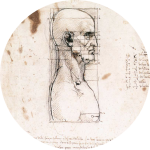 Cervical Myelopathy
Cervical Myelopathy
TREATMENT
**I MEDICAL TREATMENT
Medical treatment in cervical spondylotic myelopathy can only be symptomatic. It can however yield transient improvement in early or slightly advanced forms or when there is a contra-indication for surgery (14). An epidemiological study on cervical radiculopathy showed that 75% of patients improved on conservative treatment and only 25% of the patients were operated upon (65). After a follow up of 6 years , 90% of patients remained relieved. Suggestive factors of poor response to conservative treatment may include advanced age, duration of symptoms, severity of myelopathy and canal stenosis (25).
However, data from the literature regarding the effectiveness of these various measures in the medical therapy of cervical spondylotic myelopathy, and their position relative to surgery in influencing the evolution of the disease is still insufficient (55). Medical treatment may include:![]() Class I or II analgesics
Class I or II analgesics![]() Muscle relaxants to alleviate cervical pain (reactive muscle spasm of paravertebral muscles and trapezius) and radiculalgias.
Muscle relaxants to alleviate cervical pain (reactive muscle spasm of paravertebral muscles and trapezius) and radiculalgias.![]() Non-steriodal anti-inflammatory drugs which can diminish edema from joint lesions and eventually that of the nerve root sheath.
Non-steriodal anti-inflammatory drugs which can diminish edema from joint lesions and eventually that of the nerve root sheath.![]() Steroids have not proven their efficacy in this indication (55). They can nevertheless be prescribed during exacerbations.
Steroids have not proven their efficacy in this indication (55). They can nevertheless be prescribed during exacerbations.![]() Tricyclic antidepressants and anticonvulsants, depending on the symptomatology of the patient’s pain (neuropathic pain).
Tricyclic antidepressants and anticonvulsants, depending on the symptomatology of the patient’s pain (neuropathic pain).![]() Kinesitherapy therapy focused on the para-vertebral muscles, upper limbs motor deficits and gait abnormalities, combined with physiotherapy.
Kinesitherapy therapy focused on the para-vertebral muscles, upper limbs motor deficits and gait abnormalities, combined with physiotherapy.![]() Heat therapy do not seem useful in the "global" management of the patient during medical visits.
Heat therapy do not seem useful in the "global" management of the patient during medical visits.![]() Cervical immobilization may be proposed when there is clinical or radiological instability bearing in mind that prolonged immobilization favors joint stiffness and para-vertebral muscle atrophy thus aggravating instability. It can be temporary and should be associated with rehabilitation of neck muscles.
Cervical immobilization may be proposed when there is clinical or radiological instability bearing in mind that prolonged immobilization favors joint stiffness and para-vertebral muscle atrophy thus aggravating instability. It can be temporary and should be associated with rehabilitation of neck muscles.
Finally, it is not advisable to be engaged in occupations subjecting the spine to repetitive microtraumas and / or severe injuries.
 Encyclopædia Neurochirurgica
Encyclopædia Neurochirurgica

